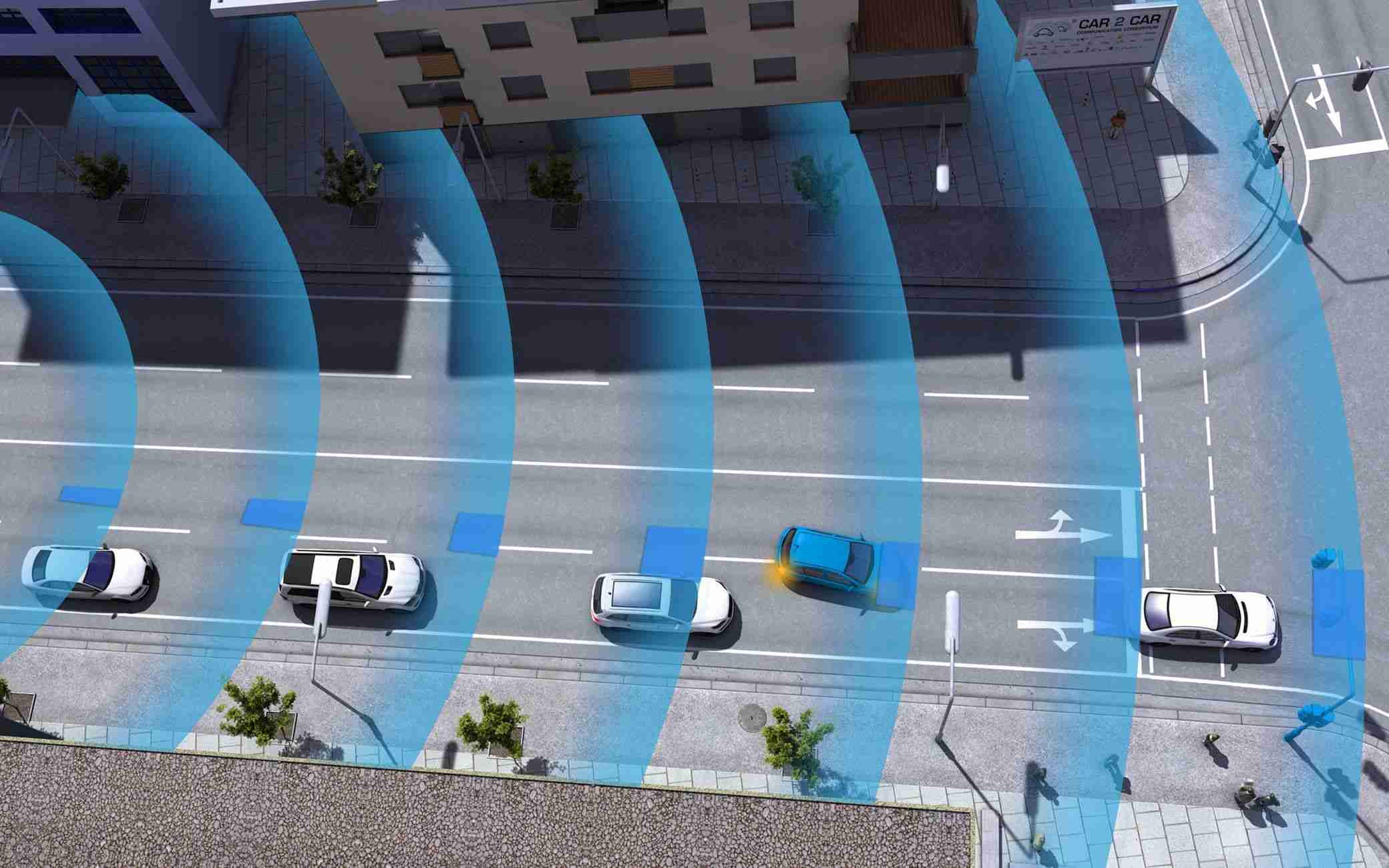[2025 Update] The Motorist Guide to ERP 2.0 in Singapore

Singapore is gearing up to revolutionise the way it manages road traffic with the second generation of Electronic Road Pricing.
Singapore is gearing up to revolutionise the way it manages road traffic with ERP 2.0, a major upgrade from the original Electronic Road Pricing (ERP) system, which was also a revolution in traffic management when it was introduced in 1998. According to LTA (Land Transport Authority), the 25-year-old ERP system is reaching the end of its operational lifespan, so it is finally due for a full model change after a quarter-century of reliable operation.
The country continues to be a global pioneer in real-time, differentiated charging for road usage. ERP 2.0 is another preemptive solution to the potential problem of big gridlock on our small island during rush hour and would allow all road users to get from point A to point B as efficiently as possible, especially during peak periods on the busiest expressways and arterial roads, and also certain parts of town and the central business district with frequent traffic congestion.
ERP is used to manage road congestion in Singapore. Drivers will incur ERP charges when passing through ERP gantries during its operational hours. To avoid incurring ERP charges, motorists can consider using alternative routes, travelling outside ERP operational hours, or taking public transport instead of driving.
ERP rates are reviewed every quarter and adjusted during the June and December school holidays, based on the traffic conditions at the time. ERP rates are generally set in half-hour periods. ERP rates are adjusted to keep traffic moving at an optimal speed range of 20-30 km/h on arterial roads and 45-65 km/h on expressways.
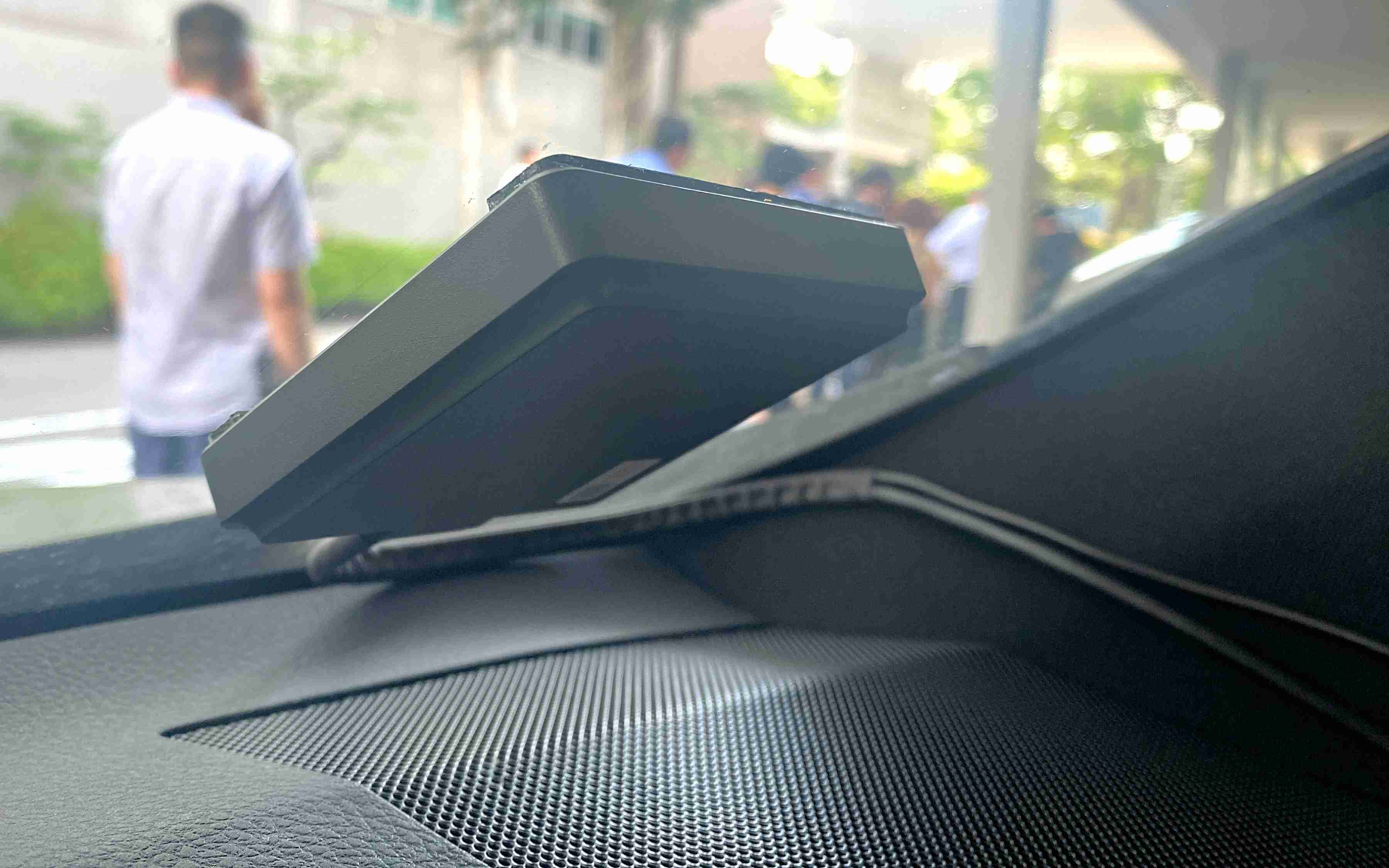 The backward-compatible antenna box of the On-Board Unit (OBU).
The backward-compatible antenna box of the On-Board Unit (OBU).
What is ERP 2.0?
The all-new version of Electronic Road Pricing uses GNSS (Global Navigation Satellite System) to “replace” the almost 80 ERP gantries. Instead of these fixed structures which are bulky and unsightly, ERP 2.0 uses unseen satellites to track the traffic in the road-pricing zones and levy the charges in effect where applicable, which would be accurate and reflective of actual usage.
Existing ERP gantries will remain during the ERP 2.0 roll-out to facilitate a smooth transition for motorists. Thereafter, the gantries will be gradually removed, and ERP charging locations will be clearly indicated by other visual markers/signages, which LTA will provide more information about in due course.
The ERP 2.0 on-board unit (OBU)
The current in-vehicle unit (IU) will be replaced with the new OBU, which comprises three components – a processing unit, an antenna, and a touchscreen display. Motorcycles get an integrated single-piece OBU. The three-piece OBU for cars and other four-wheelers is built for durability in high-temperature conditions, which tend to occur in an enclosed cabin parked under the hot Singapore sun. The three-piece OBU also gives the flexibility and cost-effectiveness of replacing individual parts if needed. Here are the three main parts of the OBU:
1. Processing Unit
This is the brain of the OBU, handling all the calculations and data stuff for your ERP payments. By default, it will be mounted on the side of the front passenger footwell, but the feasibility of this position in different vehicles will be assessed at the workshop and alternate locations will be suggested if necessary.
2. Antenna Unit
You'll find this little box on your windscreen. It's like the digital messenger, sending and receiving signals to make sure your ERP payments are spot on. This communicates with the GNSS-based ERP 2.0 network via secured 4G and with carpark gantries via a legacy antenna.
The antenna unit is fitted on the right-hand side of the windscreen near to the A-pillar, where today’s IU is usually located.
3. Touchscreen Display
This is optional equipment. It's like a mini-computer screen notifying the driver about ERP and pertinent payment info, along with other information such as bus lanes and Silver Zones.
The touchscreen also allows the driver to adjust the volume of OBU alerts. Without the optional touchscreen, the volume of OBU alerts has to be set at the point of installation and cannot be changed thereafter.
The touchscreen interface is designed to be enabled only when the car is stationary or travelling at a slow speed, and it will be disabled when the car is cruising at higher speeds.
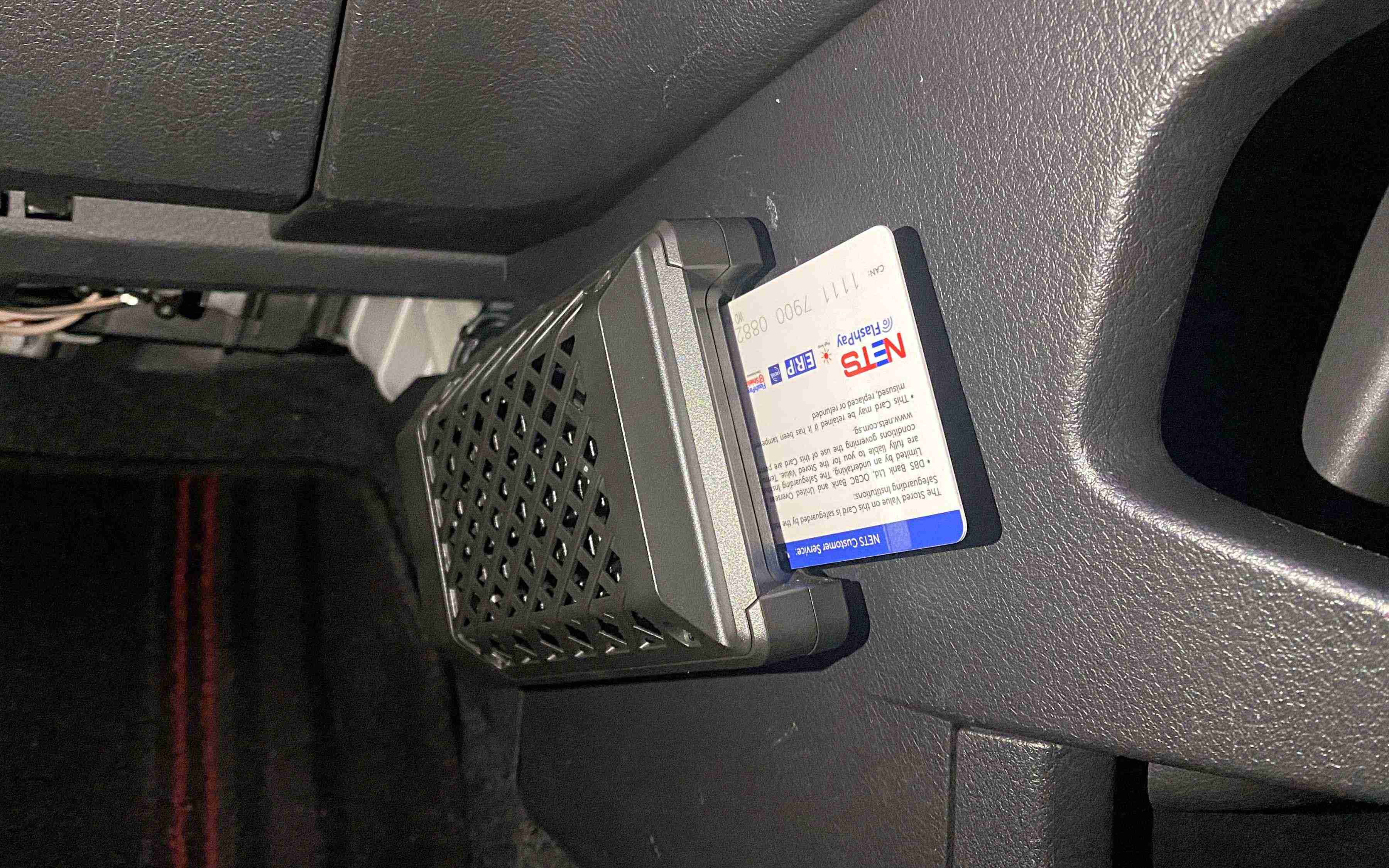 The processing unit of the OBU for your valid CEPAS card.
The processing unit of the OBU for your valid CEPAS card.
The smartphone alternative
Motorists have the option of displaying OBU information on their smartphones instead of installing/using the touchscreen display. Compatible mobile applications will enable you to access key ERP information - road pricing alerts, charging info, payment-related info relating to payment status, card balance/status, and back-end payment account indicator. Relevant traffic information is also provided by the ERP 2.0-compatible app.
An entirely app-based system was rejected because it will not offer the robust security that the ERP 2.0 system is designed to provide. With so many different models of smartphones in the market, running on different operating systems and offering different security features, a standard-issue OBU ensures that ERP transactions can be carried out reliably across different vehicles and vehicle environments.
Furthermore, the OBU has been tested extensively to ensure that it can handle real-time charging transactions and data securely, regardless of the traffic situation and the status of local over-the-air communication.
The OBU also eliminates operational issues with a smartphone-based system, such as the need to ensure that the mobile app is functioning properly and that the device is sufficiently charged and connected to the cellular network throughout the drive.
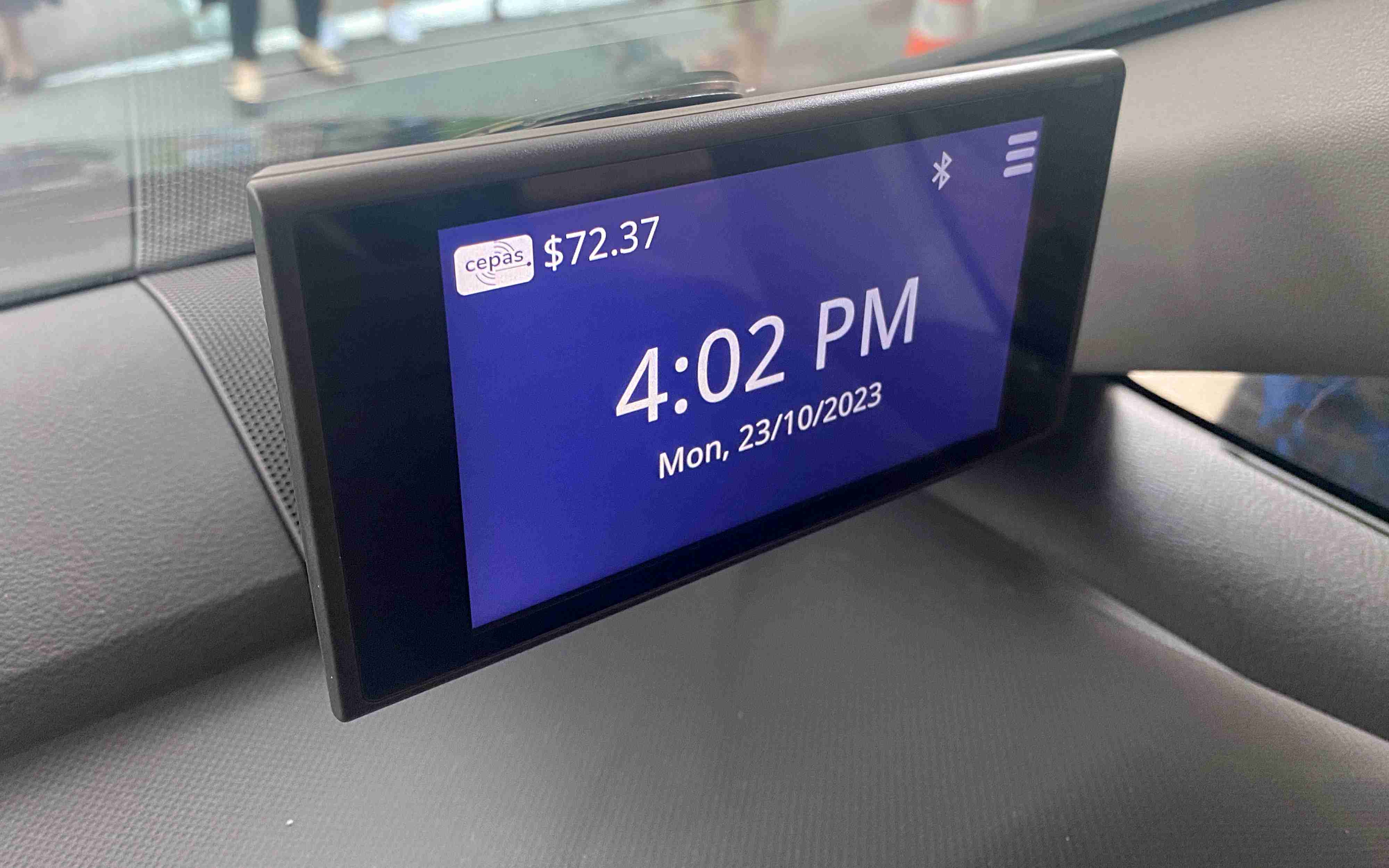 The optional, decidedly retro touchscreen display of the On-Board Unit.
The optional, decidedly retro touchscreen display of the On-Board Unit.
Installation of the on-board unit (OBU)
The installation of OBUs started in November 2023 for fleet vehicles, with all vehicle types to be retrofitted with OBUs by the end of 2025. Newly-registered cars will come with pre-installed OBUs in due course.
When it is your turn to upgrade your car’s IU to an OBU, you will be notified via a letter, email and/or SMS from LTA informing you of your two-month installation period and inviting you to book your installation appointment online. To qualify for free installation, eligible vehicle owners should install their OBUs within the allocated installation period indicated in the official notification from LTA.
On the scheduled date and time, drive your vehicle to your chosen workshop to install the OBU. Be punctual as your timeslot may be released to other motorists if you are late. Bring along a valid CEPAS card or sign up for back-end payment to facilitate immediate testing of the new OBU.
The popular CEPAS cards used by motorists are EZ-Link Motoring Card, NETS Flashpay and NETS Motoring Card, while the main back-end payment options are provided by EZ-Link Motoring Service and NETS Virtual CashCard, with direct debit to bank credit cards where applicable.
All eligible Singapore-registered vehicles will receive an OBU free of charge. The exception would be vehicles which are due for mandatory deregistration (such as those on five-year COE or reaching the end of their statutory lifespan) during the course of the OBU installation exercise. Each OBU installation is expected to take about three hours, which should get slightly shorter once the installers gain greater experience.
Each OBU comes with a five-year warranty, which commences from the date of first installation. The OBU warranty covers all manufacturer’s defects and is subject to the usual limitations of coverage on product failures caused by user negligence, improper installation, accident, mishandling, misuse, tampering, vandalism, and unusual operating environments.
There is an LTA hotline 6377-2255 for motorists to enquire about ERP 2.0 matters (hotline operating hours: Monday to Friday, 8am to 6pm; and Saturday, 8am to 12.30pm).
Benefits of ERP 2.0
The current IU technology is already 15 years old (introduced in 2008), even though its improvements over the first-generation IU have been useful.
For example, the newer IU can accept both contact and contactless stored-value cards, whereas the previous model accepted only “chip” contact cards. Another welcome feature is that it can automatically top up a card that registers insufficient funds when the vehicle passes through an ERP gantry. Cashless ERP payment channels also allowed motorists to pass through ERP gantries without a CashCard in their IU and have the road-pricing charges billed to their registered credit card.
In the latest ERP 2.0 system, the OBU introduces some handy features for drivers in Singapore:
- Real-time traffic updates
Imagine getting timely updates about the traffic conditions ahead. The OBU does that, helping you to avoid congested routes where feasible and saving precious time along the way. You suffer less frustration, too.
- Instant ERP charge alerts
No more surprises with ERP charges! The OBU notifies you immediately about any road-pricing charges incurred, making it easier to manage your travel expenses.
- Potential features for the future
While these extra features are not yet implemented, the OBU is able to alert the driver when approaching an ERP-charging location, display traffic incident/accident alerts, activate usage licences (e.g. off-peak cars and classic/vintage vehicles), pay tolls at the Woodlands and Tuas checkpoints, and pay for roadside parking.
Third-party app developers, including the tech team behind the Motorist super app, will be able to integrate ERP 2.0 data for the provision of value-added digital services to their users behind the wheel. Motorists will need to provide consent for sharing their OBU data with app developers.
Conclusion
Once the new OBU is installed in your passenger car, there will be no difference in how you are charged for parking or ERP today. You would not need to update any arrangements currently tagged to your IU, such as season parking. During the transition period between old ERP and new ERP 2.0, there will be no change to the congestion pricing framework.
Distance-based charging is on the cards with ERP 2.0, but it is at least several years from implementation, which would also require a more holistic approach to traffic management that includes, for instance, the rationalisation of road tax. Paying a dollar or two per kilometre of driving is possible, we shall see.
As for privacy concerns, LTA says that ERP 2.0 will only collect vehicle-specific data for payment, charges, and ERP-related enforcement. For all other purposes, such as for transport planning and traffic management, only aggregated and anonymised data will be collected, with safeguards to prevent unauthorised access to personal data. Individual vehicles will not be identified and their road travel patterns will not be recorded.
High-tech ERP 2.0 is ramping up and there is no turning back from this new-generation Electronic Road Pricing system for Singapore.
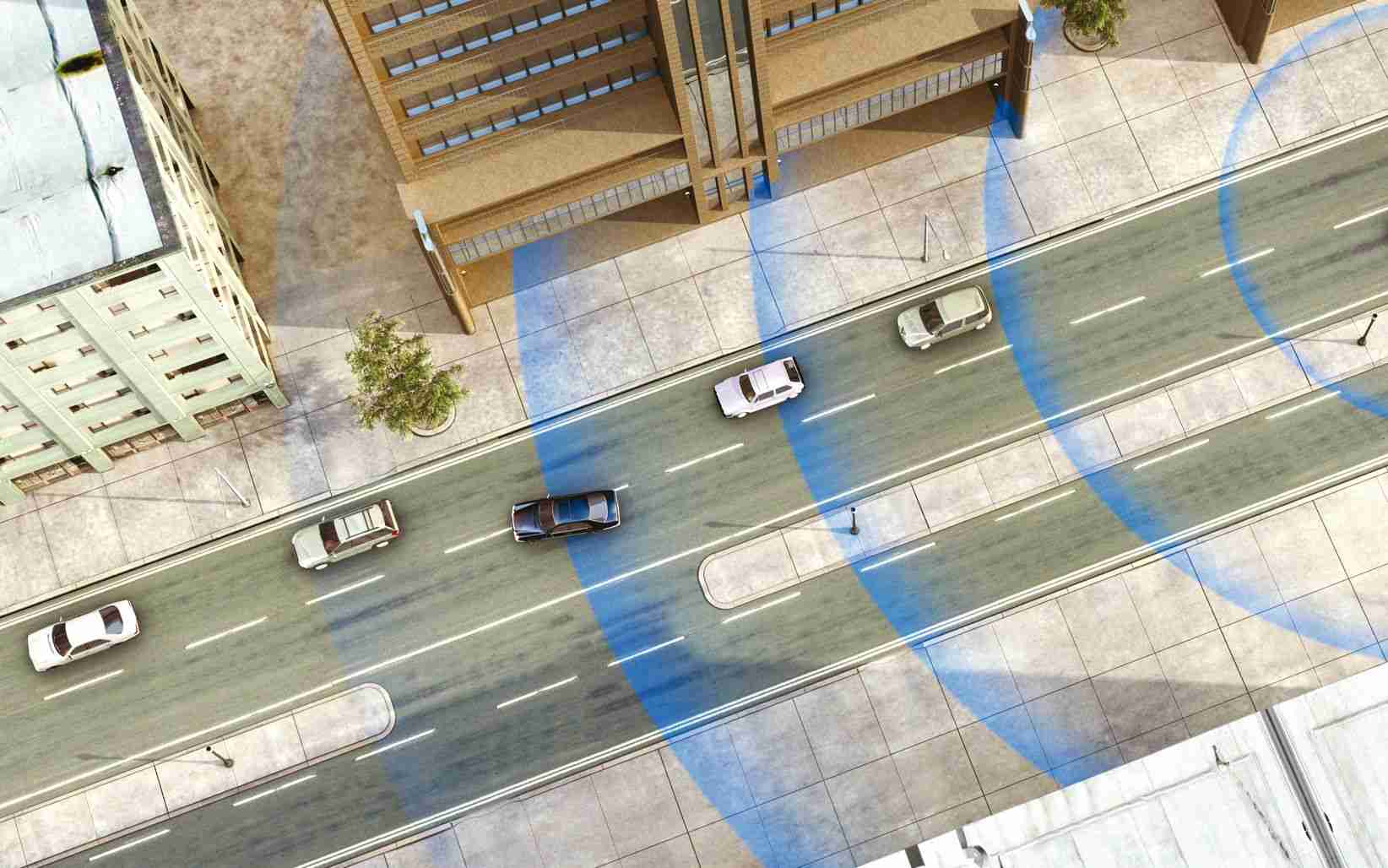
Super App for
Vehicle Owners
Download the Motorist App now. Designed by drivers for drivers, this all-in-one app lets you receive the latest traffic updates, gives you access to live traffic cameras, and helps you manage LTA and vehicle matters.
Did you know we have a Motorist Telegram Channel? Created exclusively for drivers and car owners in Singapore, you can get instant info about our latest promotions, articles, tips & hacks, or simply chat with the Motorist Team and fellow drivers.
